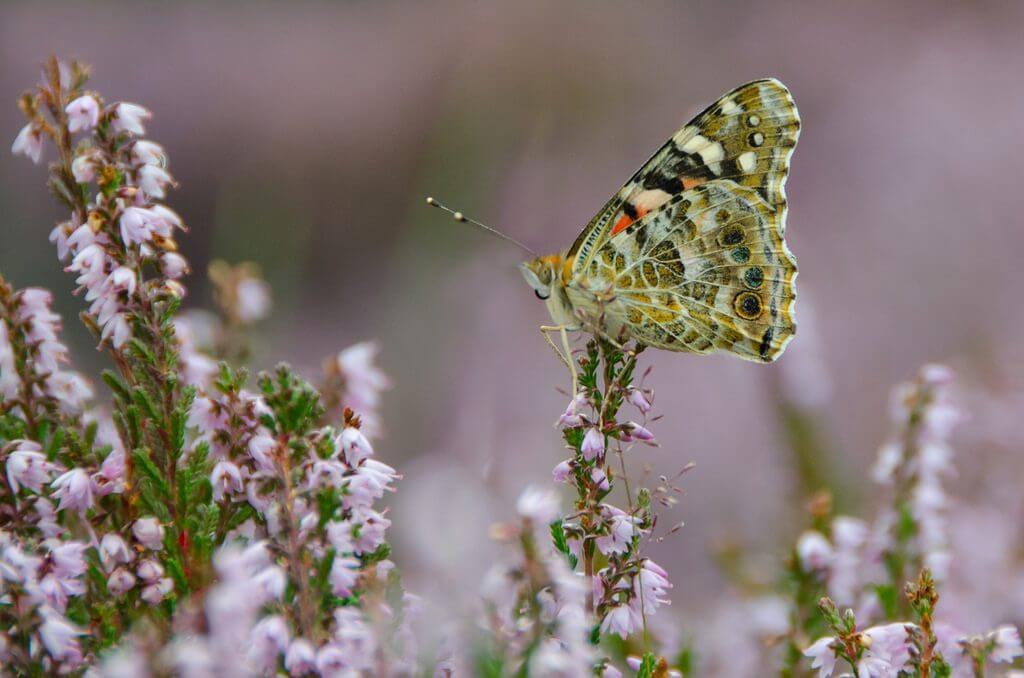Tim writes: Blooming heather is rich in nectar and attracts butterflies high onto the moors where you would not normally expect to see them. This was photographed high on the moors of the Peak District and necessitated crawling through the heather to get an eye-level view of the butterfly. The Painted Lady cannot survive the British winter but each year it reappears in greater or lesser numbers. In North Africa and the Middle East it is continuously brooded and each spring Painted Ladies disperse from these areas in search of new places to breed and lay eggs. When conditions suit them they can appear in Britain in huge numbers, which multiply again as they breed here. The caterpillars feed on thistles but the adults feed on a range of nectar-rich flowers, including heather. In the autumn some of the British Painted Ladies make the return journey back to North Africa.
The name Painted Lady sounds like a modern construct but it has been in use since the seventeenth century when the first butterfly books in the English language were published. Even its first Latin description was Papilio Bella Donna; Beautiful Lady butterfly.
Taken with Nikon D7000 with Nikkor 18-200mm at 200mm 1/500 f5.6 ISO 800
[registration_form]
Still known as la Belle-Dame in French (but more prosaically as der Distelfalter – Thistle butterfly – in German). A beautiful ornament to the summer by any name.